The QNAP HS-264 is a powerful and silent media serving NAS, but it isn’t cheap.
Pros
- Powerful platform
- Dual 2.5GbE LAN
- 8GB DDR4 RAM
- Silent
Cons
- Zero upgrades
- No M.2 slot for caching
- Remote control not included
Our Verdict
Many NAS drives get used to store media collections that are invariably a mix of media types that the owners want to have access to on a TV or mobile devices about the home.
But, conventional ‘shoe box’ designs don’t naturally lend themselves to deployment to a lounge since they tend to be far from discrete.
QNAP is one of the NAS makers that don’t follow the crowd, and its new HS-264 isn’t like anything that the likes of Synology or Asustor offer. This device has been designed to reside in the general living space alongside the games consoles and cable TV boxes but offers all the functionality that we associate with a modern NAS.
Compared with a simple NAS box, this is an expensive solution as the barebones kit is £599/US$599. This begs the obvious question about the extra investment and what the owner gets for their money.
Does the TS-264 deliver enough bang for the significant bucks QNAP is asking?
Design & Build
The scale and shape of the TS-264 have much more in common with a set-top TV box like Sky Q than a NAS, at just over 4cm thick and 30cm wide.
The chosen form factor makes it look much more at home alongside a TV, but it restricts the number of drive bays available to just two.
That you have to use screws to mount the drives is a little disappointing, but it’s generally only something that will happen once for most owners.
Along with the HS-264, QNAP includes a laptop-style PSU with a maximum power output of 65W, mounting screws and a single LAN cable.
Two cables might have been more appropriate since on the back of the NAS are two 2.5GbE LAN ports together with two USB 3.2 Gen 2 (10Gbps) ports and two HDMI 2.0 video outlets. On the rear panel are a Kensington security slot, a power on button and a reset hole.
That last point is critical because QNAP promotes this product as ‘silent’, and unless you have especially noisy drive mechanisms, it mostly is.
Specs & Features
Considering that the customers that this product is firmly aimed at are media serving, QNAP didn’t take the HS-264 in a direction where it was dumbed down only to deliver that functionality.
On paper, the specification of this NAS is closer to an entry-level desktop PC, being built around the Intel Celeron N5105 quad-core and 4-thread processor, with a burst clock speed up to 2.9GHz. Combined with 8GB of DDR4, this hardware is at the apex of that available for a home NAS and is more powerful than many NAS built for business users.
This silicon has an integrated Intel UHD Graphics subsystem, enabling it to directly output video to an HDMI connected TV in resolutions up to 4K (3840 x 2160) at 60Hz.
With each port supporting more than 1000Mb/s of transfer bandwidth, they neatly negate the limitation of having just two drive bays, as an external USB RAID array could easily be attached. Equally, the inclusion of dual 2.5GbE LAN ports also opens up new possibilities.
Getting the most out of this configuration requires either a switch that can use link aggregation or the activation of SMB (Server Message Block) multichannel mode on both the unit and connecting computers.
The Link aggregation option not only requires a switch that this can be set but also limits the throughput of a single client to just one of the 2.5GbE lines. Whereas the SMB multichannel option merely requires that both lines are connected to a switch, and the client machine has a similar configuration with two lines or more.
However, there is a documented issue with SMB multichannel, which has stopped QNAP, Synology and others from adding the interface controls to activate this feature of SMB 3.0. It can be switched by editing a specific file on the NAS if you are familiar with the vi editor.
Some have used it without problems, while others have encountered file corruption issues.
Without that feature active, the best performance is likely to be around 230MB/s over a single 2.5GbE LAN port, or 113MB/s if the client only has a gigabit connection.
Upgrades
Where this design could be better is in respect of upgrades.
The provided RAM is directly soldered to the mainboard, and no additional socket is provided, so 8GB of DDR4 is all it will ever have. That said, unless you intend to truly hammer the HS-264 with virtualisation, media serving and camera capture all running at once, 8GB is a decent amount of memory.
For file serving purposes, this much memory is certainly sufficient, as my experimentation with adding memory to most NAS reveals no significant performance benefits to more than 8GB. If you intend to run applications primarily, a NAS with more RAM might be advantageous.
But where the lack of additions hurts the HS-264 most is in respect of cache memory. The only way to add that is by using one of the two available drive bays occupying one with a 2.5in SATA SSD.
To make proper use of the two 2.5GbE LAN adapters, an SSD cache or using SSD drives is a necessity. Two conventional hard drives working together in RAID 0 aren’t faster enough to flood both LAN ports with the bandwidth they can handle.
If you only use one drive, then the send bay needs a SATA SSD installed and configured as cache, or you won’t be able to fully utilise a single 2.5GbE port, never mind two of them.
User Experience
As with all the QNAP NAS we’ve tried recently, including the TS-230, the HS-264 is relatively easy to get operational.
Once the unit has a drive or drives installed and connected to the LAN, it can be found on the network and installation of the QTS operating system can begin.
This process doesn’t take long, and as part of this preamble, various critical applications are installed to get the NAS operational. The web interface is very like what we’ve seen from Synology, TerraMaster and Asustor, providing a simple means to control the OS and applications on it.
With the processor and memory available on this unit, the interface is remarkably responsive even when you’ve loaded it up with numerous applications.
Within the constraints of web-based content, anything you can normally operate with a web browser should be accessible through HybvridDesk Station, assuming you have a mouse and keyboard connected to the HS-264 to control them.
The NAS has an IR sensor, allowing it to be controlled with a suitable remote, but amazingly QNAP doesn’t bundle one with it despite the asking price. The official remote is another US$29.99, though it might work with other programmable IR controllers.
For those curious about the two HDMI ports, they can either display an extended environment over the two connected displays or mirror the contents.
This aspect of the HS-264 is one of the better HDMI interface implementations that I’ve seen, and the number of potential applications that can utilise this functionality makes this hardware very flexible. This functionality is ideal for those who want to use it as both a working system and a NAS simultaneously.
Price
It can also be found with preinstalled drives increasing the price from 2x1TB drives for £842 up to 2x10TB for £1,285.
However, given that a Seagate 10TB Iron Wolf NAS drive is around £260/ US$240), those wanting to save a significant amount should buy the drives independently and take the two minutes to install them.
Find more options in our best NAS drive chart.
Verdict
The QNAP HS-264 has many excellent features, and the amount of processing power and memory in it provides an impressive platform for those that wish to use a NAS for more than file serving.
However, due to the dual-drive configuration and lack of a dedicated M.2 cache slot, it’s challenging to get all the performance available over the potential 5Gbps of network bandwidth available.
There is so much spare power in this system it is possible to use it as a conventional computer, hooking up a mouse, keyboard and monitor to access productivity applications through HybridDesk Station.
It’s also an excellent tool for those developing software, as it supports three of the most commonly used Virtual platforms and a slew of development suites.
That last point hints at just how flexible the HS-264 is, even if QNAP are primarily pushing this hardware as a media centre. And, for the majority of home users, some of the power in this machine will never be used or needed.
What it does offer is the ability to load extra demands on the NAS without worrying that these requirements might excessively stress the platform. It should be possible to make this a media centre, personal Cloud server and security camera storage without it appearing sluggish at any of those tasks.
The downside to having that much power is a bare-bones two-bay NAS for £599/$599, being more expensive than the Asustor Lockerstor 2 (AS660ST) by £200/$200.
For those with less ambitious plans, some of the lesser Synology boxes can be bought for a similar outlay, but these come with hard drives included in that price. What these NAS drives don’t come with is 2.5GbE LAN ports.
Anyone considering buying this needs to understand that to get the most out of it probably means running a single drive, and SATA SSD in combination, that a 2.5GbE switch is a necessity, and also dual 2.5GbE LAN ports are required on the client PC end to make for the fastest file transfers.
If you’re willing to make those infrastructure investments and buy appropriate storage and external drives to back it up, then the HS-264 is something of a silent behemoth and a handy platform.
Specs
- Processor: Intel Celeron N5105 4-core/4-thread processor, burst up to 2.9 GHz
- Memory: 8GB DDR4 (Not expandable)
- Drives: 2x 3.5in or 2.5in SATA HDD/SSD (drives not included)
- RAID Modes: Single, JBOD, RAID 0, RAID 1
- Networking: 2x 2.5GbE LAN port
- Networking Protocols: CIFS/SMB, NFS, FTP, AFP, TFTP, HTTPS, SSH, iSCSI, SNMP (V2,V3) USB ports: 2x USB 3.2 Gen 2 (10Gbps) Port
- HDMI Output: 2x HDMI 2.0 (up to resolution 3840 x 2160 @ 60Hz)
- OS: QTS 5.0
- OS Languages: Chinese (Traditional & Simplified), Czech, Danish, Dutch, English, Finnish, French, German, Greek, Hungarian, Italian, Japanese, Korean, Norwegian, Polish, Portuguese (Brazil), Romanian, Russian, Spanish, Swedish, Thai, and Turkish
- Maximum capacity: 40TB (2x 20TB)
- Maximum Single Volume: 250TB
- Internal drive formats: EXT4
- External drive formats: EXT3, EXT4, NTFS, FAT32, HFS+, and exFAT (license required)
- Size (HxWxD): 41.3 x 302 x 220 mm
- Warranty: 5 years


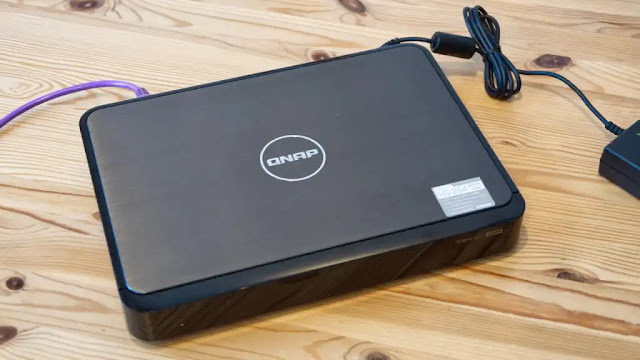
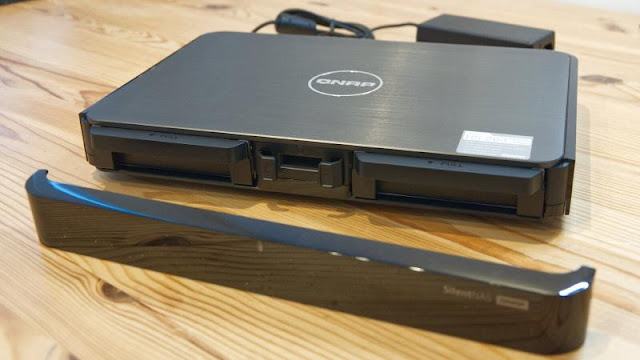
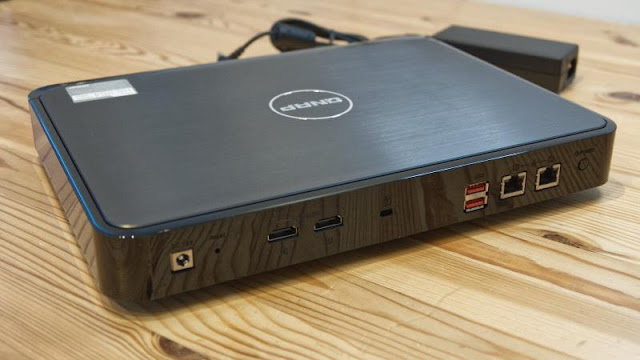
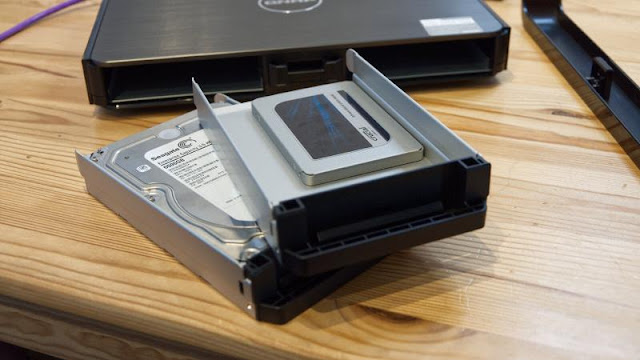
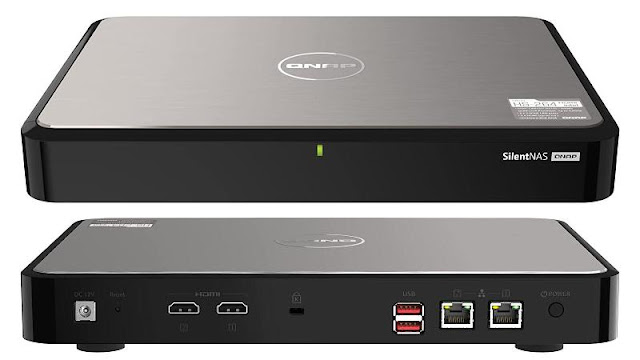


0 comments:
Post a Comment